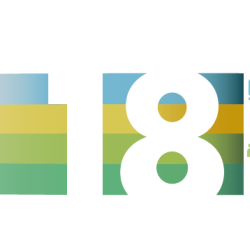2019 Trends in State Courts Highlights Access Needs and User Perspectives
 The National Center for State Courts’ (NCSC) 2019 Trends in State Courts explores how to make state court processes both more comprehensible and relevant to the public. The articles relate the innovative ways that various state courts are rethinking their conventional practices in favor of ones more user-focused and, in some cases, tech-savvy.
The National Center for State Courts’ (NCSC) 2019 Trends in State Courts explores how to make state court processes both more comprehensible and relevant to the public. The articles relate the innovative ways that various state courts are rethinking their conventional practices in favor of ones more user-focused and, in some cases, tech-savvy.
From differentiated case management in Pima County’s Dependency Alternative Program to an array of mobile device-based systems designed to close the justice gap, legal innovators everywhere are actively working to make the justice system one that works for its users.
Examining legal ecosystems
The Importance of a Legal Ecosystem, authored by Tom Clarke, Principle Research Associate at NCSC, lays out the potential for a “legal ecosystem” to help achieve complete access to justice, especially when it comes to self-represented litigants. Like an ecosystem found in nature, a legal ecosystem is integrated, hierarchical, and, perhaps most importantly, systemic—that is, greater than the sum of its parts.
For an example of this concept in application, the Justice for All (JFA) project is aimed at states achieving 100 percent access to justice. Early pilot projects of participating JFA states have identified barriers unique to each state and focused on solutions to those barriers, whether it is identifying community members willing to play key outreach roles in Alaska and Hawaii or lawyers providing limited (or unbundled) representation in Colorado.
Although lawyers and the courts have traditionally had a monopoly on settling legal disputes, expanding who exactly can provide legal services (and how they can provide them) could make a world of difference in meeting the vast amount of unmet legal needs. And with the proportion of those with unmet legal needs hovering at 80 percent, it is more crucial than ever that we find a way to shrink that number. Washington State and Utah have piloted programs allowing non-lawyers to deliver legal services to people in a meaningful way. Alternative dispute resolution is also an alternative to the traditional court system with a mix of costs, speeds, degrees of due process, and convenience.
“If a proper legal ecosystem existed, appropriate legal services could be matched to each type and level of legal problem.” A system in which there are a number of different options, providers of legal services could use an array of processes with a mix of costs, speeds, degrees of due process, and convenience (including availability at any time and place online) to help address those urgent needs.
Overcoming challenges in court communication
The Court’s Technology Communication Challenge, authored by James E. McMillan, Principal Court Management Consultant at NCSC, identifies the critical need for solutions to the communication issues that exist between courts and citizens—solutions that include those presented at the ninth annual Innovating Justice Forum, held by The Hague Institute for Innovation of Law (HiiL), earlier this year. Finalists of technology solutions included Nigerian based Law Padi, which acts as an “automated legal assistant” operating via a question-and-answer interface and He! Lawyer, an app based in the West African Country of Benin, that connects the user with a lawyer via callback. While newly developed apps are aimed at providing people with access to legal advice, lawyers, and even document preparation, the apps may be very useful to people with legal knowledge but not as successful for people who have no understanding of the appropriate area of law. Innovators around the globe continue to struggle with this challenge, adjusting and improving technology to meet people’s legal needs in a realistic, user-centered way.
Considering remote technology options
Evaluating Remote Technology Options to Increase Self-Help Center Access, authored by Sheldon Clark, Litigant Services Manager at the Tenth Judicial District in Ramsey, Minnesota, looks at how remote technology options could aid Minnesota’s Tenth Judicial District in providing better access for self-represented litigants. After surmising that online forms and in-person self-help center services may not be completely meeting the legal needs of litigants, the Tenth Judicial District conducted a survey to assess the interest in remote technologies, such as video conferencing, live chat, and text messaging.
The results were clear: approximately two out of three survey respondents said they would use all three technologies to contact the self-help center, with text messaging being the most popular option. Text messaging in particular has the potential to supplement existing services, allow staff to use their time more efficiently, and—most importantly—increase access to justice for those who need it most.
The sentiments in these articles—providing complete access to justice by considering what would best work for the people who need it and how the right technology tailored to its users can help—are echoed in Eighteen Ways Courts Should Use Technology to Better Serve Their Customers, a recent IAALS report that lays out ways in which courts can adopt technology such as smartphones, videoconferencing, and electronic filing in order to make court processes both more efficient and cost-effective for litigants.



